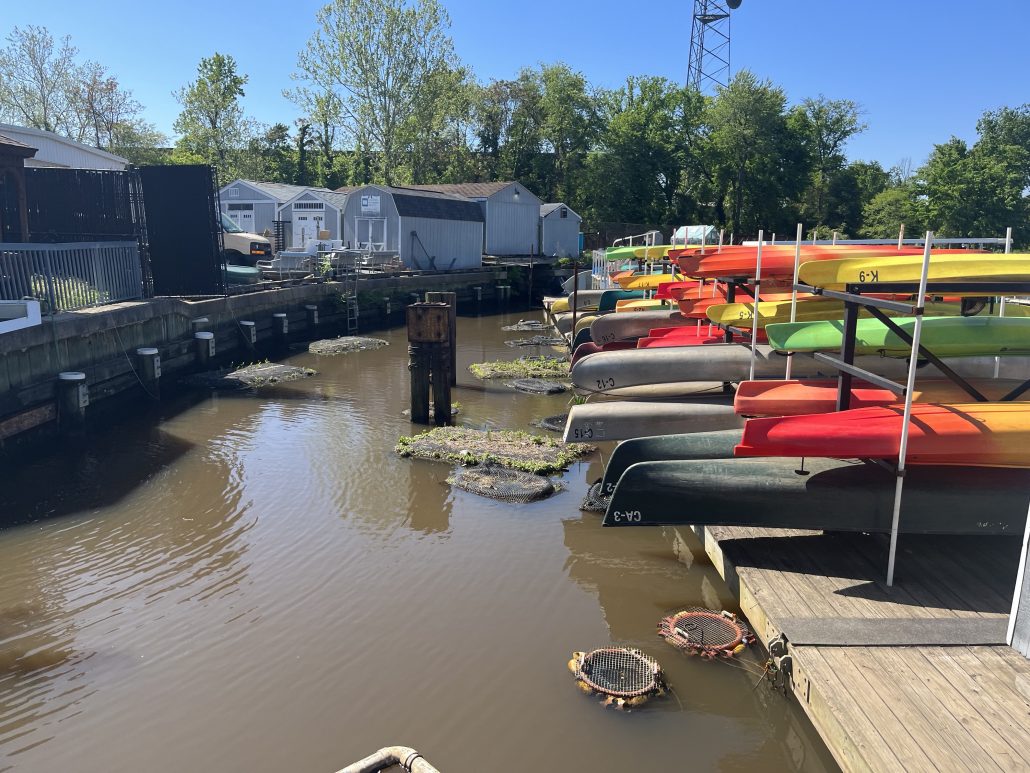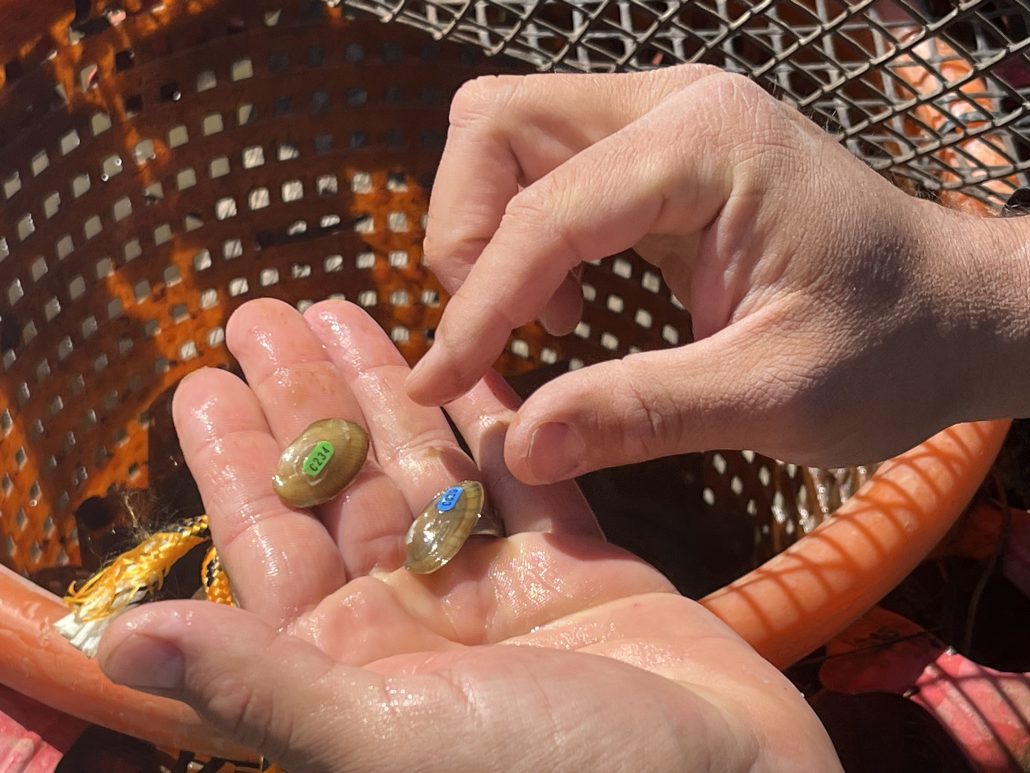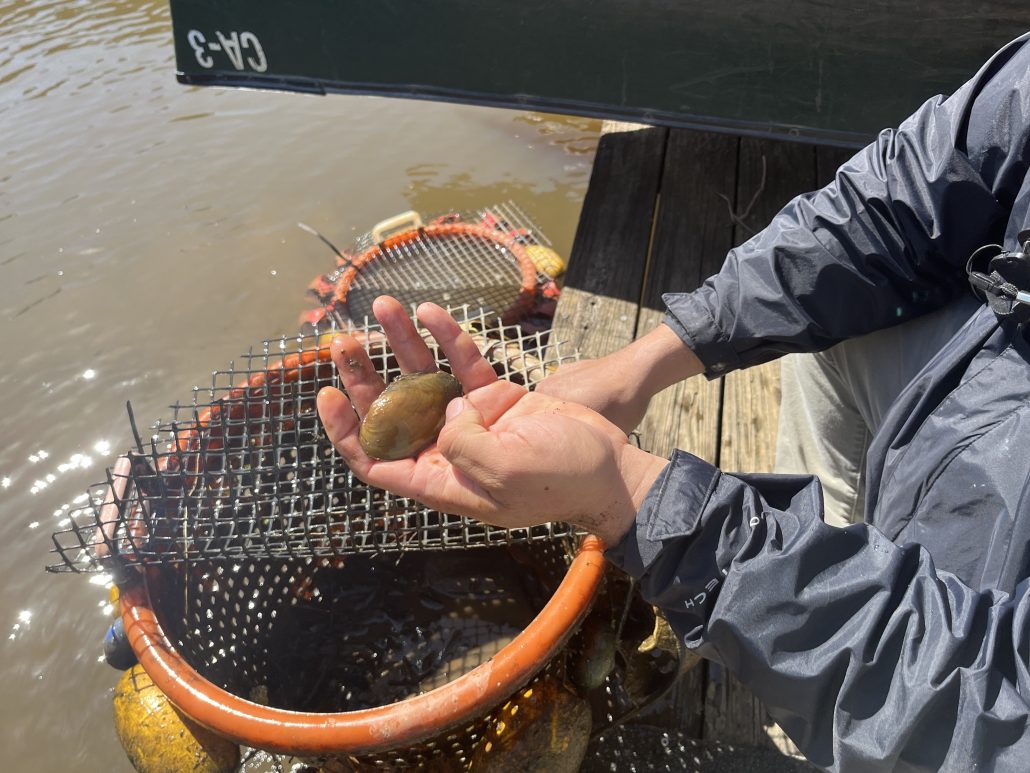BY HUNTER SAVERY AND JONATHAN DONVILLE
In Bladensburg Waterfront Park, baskets of mussels float gently with the tide, nestled between the pier and kayaks stacked high on the dock. This is where the mussels mature until they are ready to be released downriver in locations like the Kenilworth Aquatic Gardens in Northeast Washington.

The mussels are part of an ambitious project to make the Anacostia River swimmable and fishable by 2025. The Anacostia Watershed Society (AWS) hopes that these mollusks will clean the polluted waterway and help replenish the mussel population, which has diminished significantly in recent years.
“We see a lot of interest, actually. We never knew that mussels could be charismatic, because they aren’t feathery or cuddly, but people love them for some reason,” said Jorge Bogantes Montero, natural resources specialist with the Anacostia Watershed Society.

The idea of mussel restoration is fairly straightforward. According to the society’s website, mussels are filter feeders, which means they consume organisms like algae, plankton and bacteria, taking those things out of the water. They also help to settle sediment onto the river bed, which makes the water clearer. This allows more sunlight to pass through the water, which leads to the growth of more vegetation.
Achieving the goal of making the Anacostia swimmable and fishable once again may take as many as 300,000 mussels, according to Bogantes Montero. Since 2015, the AWS has released 24,000 mussels into the river, bolstering the flagging native populations.
Bogantes Montero said the results have been encouraging. The mussels raised and released so far have had a survival rate of over 90%.

People often want to know if the mussels in these waters are edible. Bogantes Montero said they are, but he wouldn’t recommend eating them. They have a muddy taste, not to mention the fact that the mussels love eating things like E. Coli.
The project began seven years ago, when the AWS teamed up with the Maryland Department of Natural Resources (DNR) to conduct an assessment of the mussel species in the river.
“It’s also one of the most polluted areas in the state. So nobody had surveyed that area, really in a century,” said the DNR’s Matt Ashton, who works as a member of the Resource Assessment Service.
There was work to be done.
The survey found six types of native mussels in the water, but there were more species in the lakes surrounding the Anacostia than in the main stem of the river, according to the AWS website.
Mussels — once cultivated in American waterways to make buttons from the shells — were imperiled in the U.S. as plastics replaced the need for shell buttons, which took away the motivation to protect mussel beds. Pollution threatened their populations, according to Bogantes Montero, who said that “over 70% of species are now extinct, rare, threatened or endangered.”
That’s why there is a lot of work left to do with the mussel project, not only as a means of biofiltration, but also to conserve the species.
In the Anacostia, the mussels are grown in floating wire baskets until they are ready to be released to the bottom of the river, where they can begin their work cleaning the water. Currently, the AWS is using eight different sites for the floating baskets, as far upstream as Bladensburg Waterfront Park in Prince George’s County, and as far downstream at the Navy Yard in D.C.
To this point, the AWS have used the wire baskets in ponds or other still-water environments. Now, they are floating the baskets in the moving river water for the first time. Bogantes Montero said the tide of the river could wash mussels out of the baskets, but the Anacostia is slow-moving enough that so far, they have lost very few.
Bogantes Montero said the AWS always releases the mussels in D.C., due to regulatory issues in Maryland. He notes also that mussels can survive long periods out of the water, making them easy to transport.
Because using mussels to clean rivers is relatively new, not much government funding is available. Nonprofit organizations supply most of the money for these projects. The Chesapeake Bay Trust, a non-profit foundation, has given grants to at least seven different mussel-related projects since 2018, ranging from a few thousand to $22,000, according to Sadie Drescher, vice president of the trust’s programs for restoration.
Using mussels to clean dirty river water is still an experimental project. On one hand, mussels are native species and provide a natural and potentially self-sustaining solution to the problem of Maryland’s water pollution.
However, even if mussels are successful, they are just one part of the extremely difficult solution of cleaning polluted waterways, and there is still a lot to learn. According to Drescher, mussel projects are not approved by the Environmental Protection Agency Chesapeake Bay Program Office, and more studies need to take place before mussel projects can really take off. Drescher said there have been more projects using oysters for similar filtration purposes, but freshwater mussel projects are still relatively rare.
Drescher also noted that other concerns like specific chemical pollutants, and the rising temperature and amount of stormwater run-off are major contributors to river pollution. Both are examples of things that mussels cannot fix.







